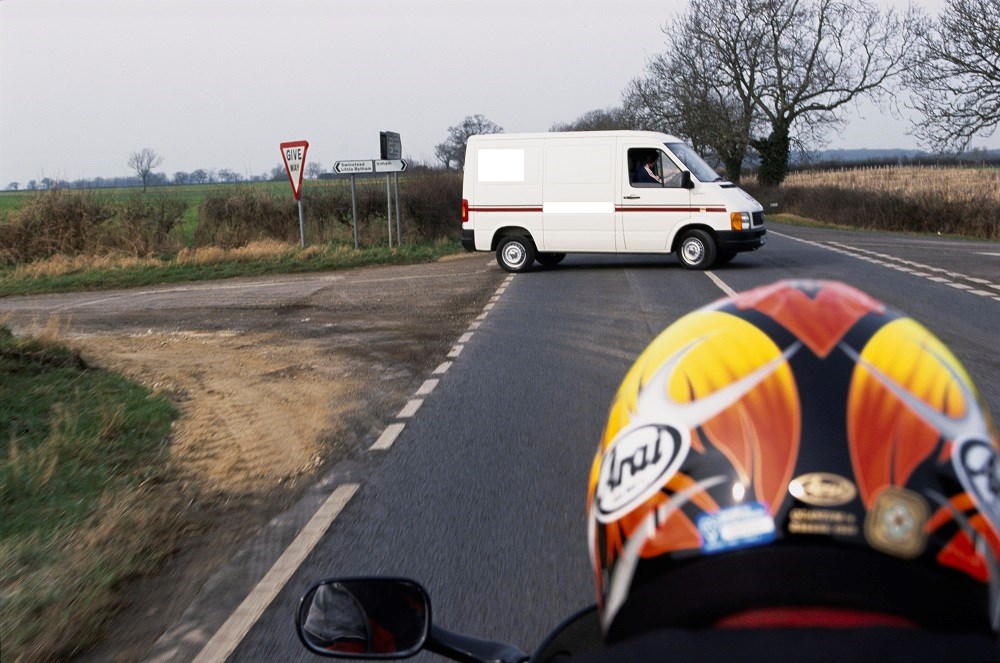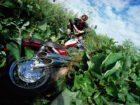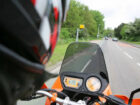It doesn’t matter how much riding experience you have; accidents happen. But you can cut the risk by staying mindful of the road and what’s going on around you. To help keep you safe, we’ve put together some tips on how to avoid the most common motorcycle accidents faced by UK riders.
How many motorcyclists are injured in the UK?
The good news is that motorcyclist fatalities have been falling since 2004. Back then, 585 motorcyclists lost their lives in road accidents while more than 8,500 were seriously injured. A further 16,492 suffered slight injuries.
The bad news is despite an improvement in those statistics, hundreds of motorcyclists are still fatally injured every year. The most recent figures from 2020, reveal that 285 bikers were killed on UK roads while more than 4,400 were seriously hurt. A further 8,890 motorcyclists suffered slight injuries.
Despite those figures being nearly half what they were nearly two decades ago, there’s still room for improvement.
Where do most common motorcycle accidents occur in the UK?
Motorcyclists were more likely to suffer slight injuries in urban traffic but it’s rural roads that are literally the killer. Figures from the Department for Transport show that 66% of fatalities happen on rural roads. That’s more than double the number of deaths that occur in urban traffic (31%) and considerably higher than for motorways, which account for 3% of fatalities.
Department for Transport data also show that just over 800 fatalities between 2015 and 2020 involved a car, but in 445 fatal incidents, no other vehicles were involved at all.
What are the most common types of motorcycle accident?
Accidents happen when you least expect them and for any number of reasons, but some of the most common motorbike accidents are caused by:
- Failing to properly negotiate bends on country roads
- Poor judgement or lack of visibility when overtaking
- Filtering through traffic
- Turning at junctions
How to avoid motorcycle accidents
Few of us can predict the events that lead up to an accident, but you can lower the risk of one happening by:
Anticipating
Don’t assume that drivers can see you, even if you’re in the middle of the road about to turn into a junction. Drivers often have a blind spot for anything smaller than themselves, so pedestrians, cyclists and motorcyclists are all vulnerable.
Anticipating what could happen based on the worst-case scenario means you’ll be more cautious and observe more closely what’s going on around you.
Looking for clues
This is a great tactic whether you’re riding through towns or along rural roads. For example, at junctions, look at the driver and follow their line of sight – if they’re looking straight ahead, they might not have seen you approach. Similarly, if you see the driver’s hands move on the steering wheel, this suggests they could be about to pull out of a junction or carry out a manoeuvre.
If you’re on a country road, tree lines, hedges, and pylons can help you predict the curve of a bend. Skid marks from tyres also highlight stretches of road where cars have had to slow down suddenly, which could mean visibility is poor.
Creating space
This is particularly important in heavier town traffic where you’re having to share the road with multiple users in different types of vehicle, as well as pedestrians. Where you can, look to create safe space around you and leave enough distance between you and anything in front of you. If space is tight and you simply can’t give yourself room, check your mirrors frequently to help you identify potential risks.
Respecting conditions
This isn’t just about wet roads and rainy conditions, take care when you see anything that could suggest perilous surfaces. For example, harvesting could mean dust and chaff reduces visibility or leave mud on the roads. It can also mean being aware of tractors or farm vehicles turning in roads and coming out of hidden entrances.
The same goes for low sun, especially in winter where its position can temporarily blind you or obscure oncoming traffic.
Staying safe and minimising risk
Keeping your wits about you is one thing but don’t forget to keep your bike in good condition too. A well-maintained vehicle (whether that’s a motorcycle, car or van) can lower the risk of a collision and keep you safe. This includes checking tyres, brakes, your headlight and understanding how your bike works. As obvious as that sounds, it’s fundamentally about being in control in order to give yourself the best chance of avoiding an accident.
If you’ve just passed your test or you want to brush up on your skills, it’s also worth considering advanced motorcycle training. This can help improve your riding skills and give you greater confidence. Depending on the course you do, it could even help lower your premium with some insurers.
But as much as you can try to limit risk, if an accident happens, making a claim helps to minimise financial loss. With that in mind, it’s vital to make sure your policy gives you the cover you need.
To help find a policy that gives you the cover you need, start your search here, with us. 50% of our customers paid less than £152 for their bike insurance (based on MCN Compare data 01/10/2022 – 31/10/2022). Compare and save on your bike insurance today with MCN Compare. T&Cs apply.
Go back to our insurance guides>





